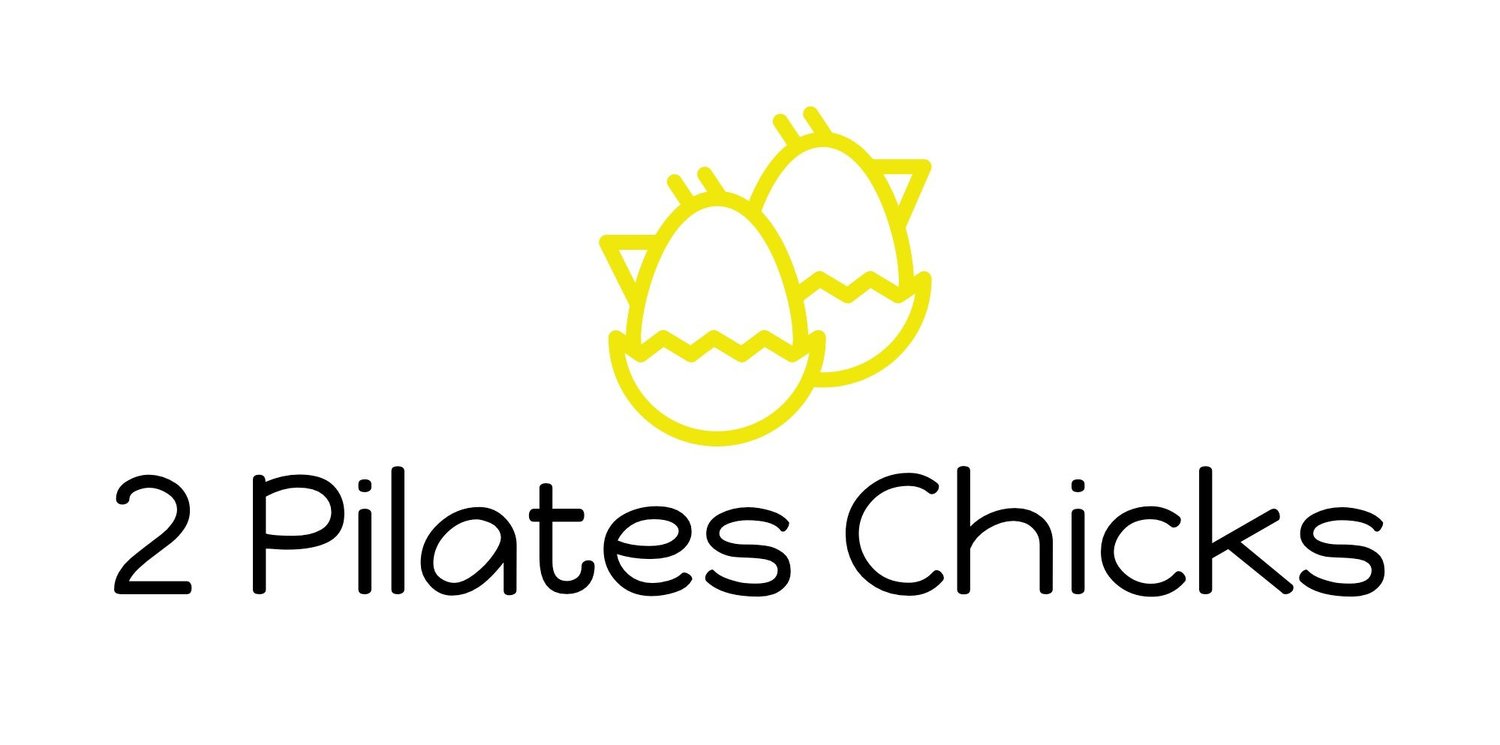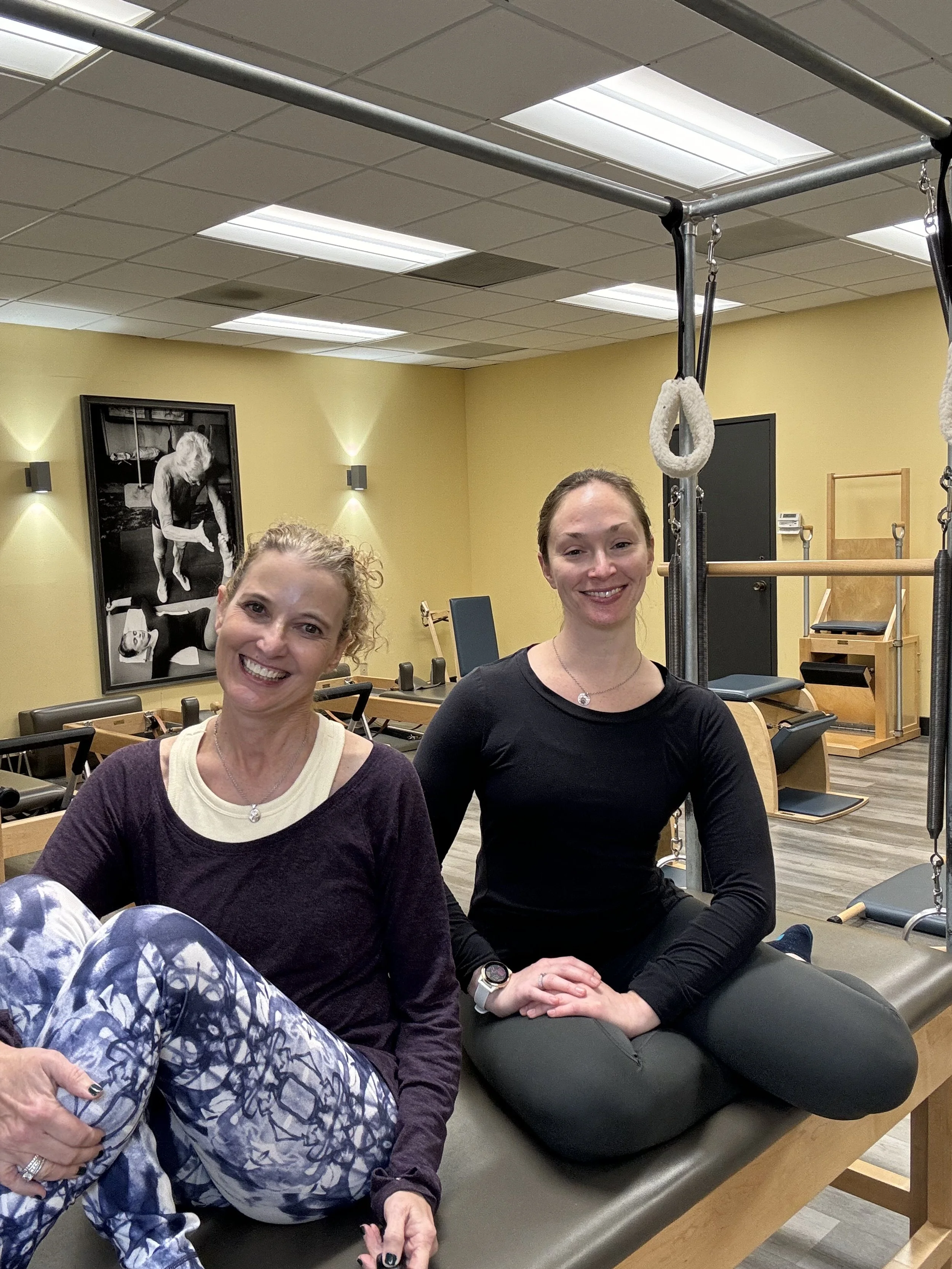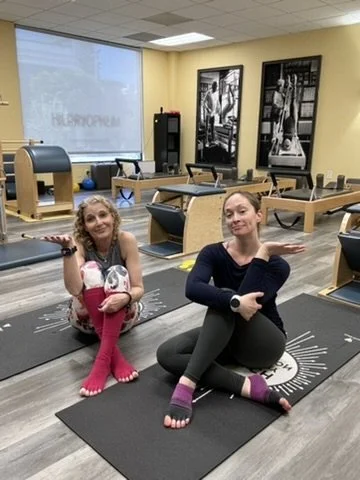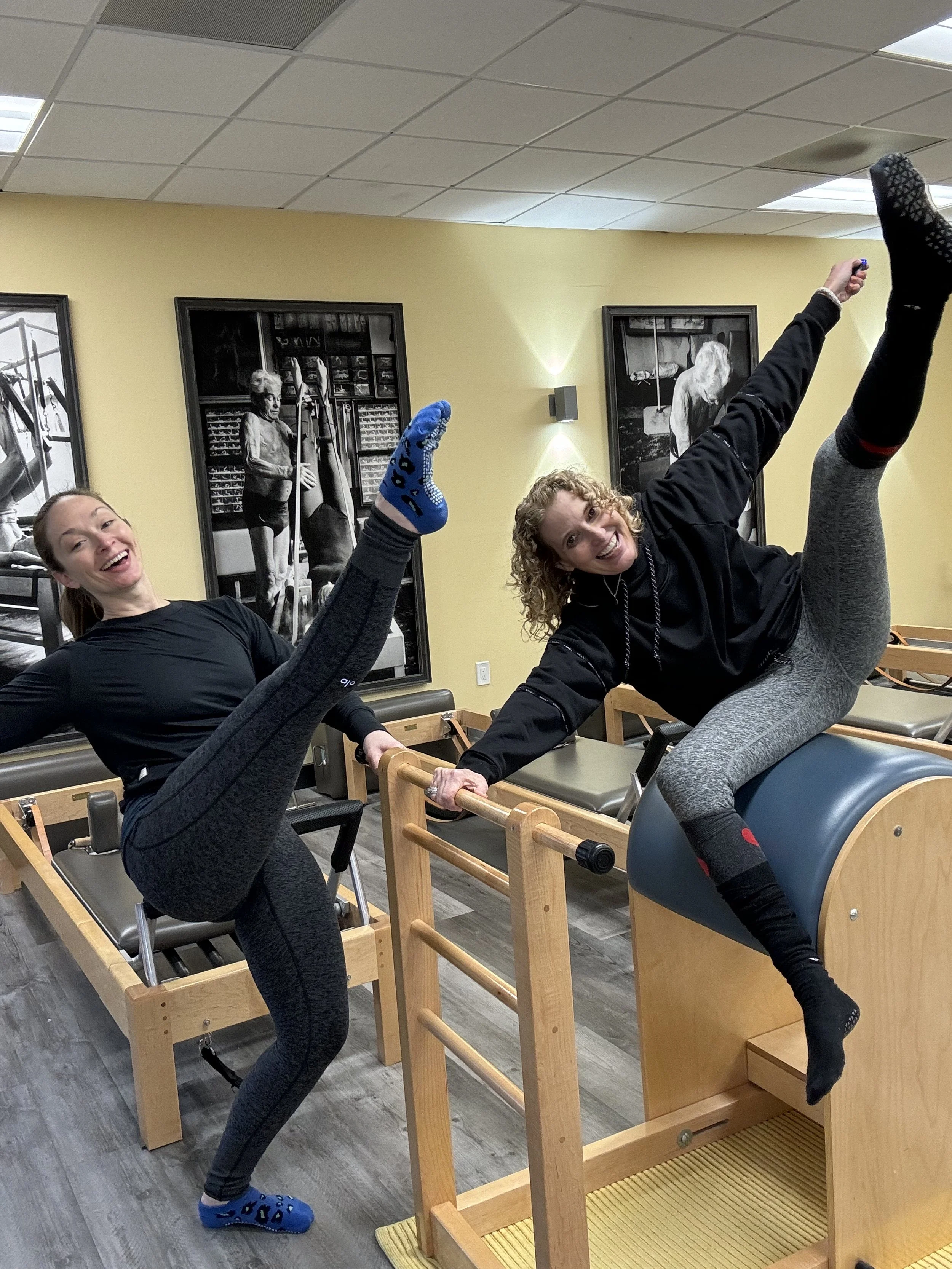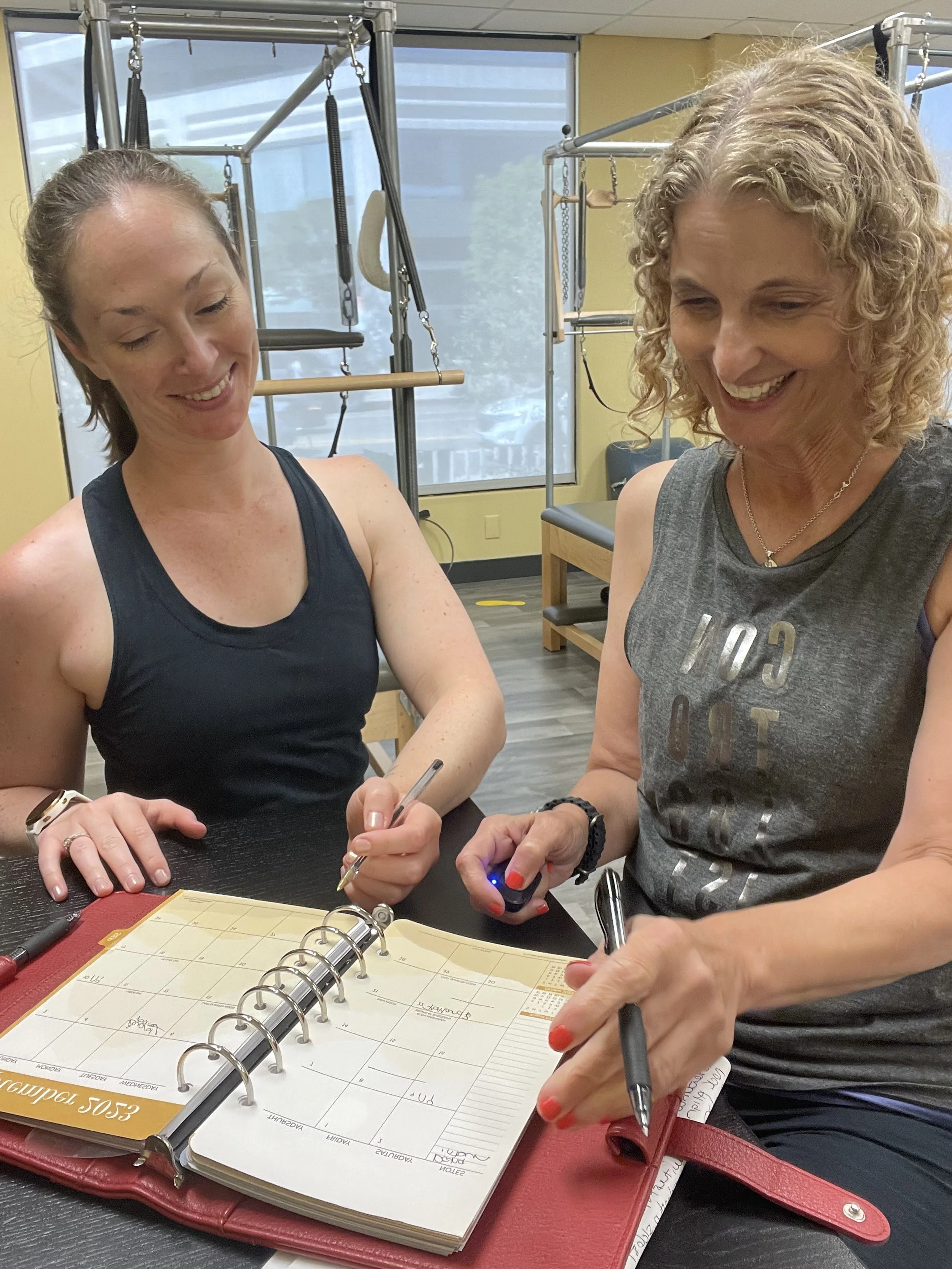What is your language as you teach Pilates?
What is the language we use when teaching Pilates? How do our words impact our clients in their sessions or how they think about their abilities in the studio? What words or cues do we use when talking with clients?
In Season 5 Episode 3, “The Language Around Teaching Pilates”, we discuss the language around teaching, how we're discussing Pilates with clients, the words we use, and how that impacts our clients and their sessions.
As Pilates teachers, it's easy to fall into the habit of picking apart how clients move. When we're in our teacher training programs or continuing education workshops we're learning how to analyze movement patterns so we focus on incorrect postures or movement qualities and what needs to be addressed. It's important to always continue learning and attending new courses, but it's equally important to figure out how to speak differently with our clients than we do with other teachers in our programs and studios.
With our colleagues, we can dive deep and analyze movement deficiencies and muscle-firing patterns of clients to figure out how best to support their movement journeys. With our clients, we want to keep our language positive to support and encourage their movement and practice, avoiding the idea that we are fixing them or that there is something wrong with their body or movement.
We're with our clients to guide their Pilates practice, to help them learn safe movement patterns, and to develop an understanding of their body in movement while gaining strength, mobility, and physical capability.
Many teachers often get into the habit of cueing "fix-its", always finding something wrong with the client's body, giving them many rules for movement and alignment. We are then giving the client the idea that they, their body, and/or their movement are flawed somehow. This can come from a well-intended place, but if the client has no serious pathologies or any safety concerns, we are unintentionally restricting the client's movement and reinforcing anxieties about movement.
We're then stopping them from moving, not letting them work through things, and making them feel flawed or that they will get injured if they don't make these minute adjustments before trying the exercise. However, the goal of the studio is to help the client learn how to move outside the studio. Everything we do in sessions directly assists movement of other activities clients enjoy doing, and the activities of daily living. Therefore we need to guide clients through their movements not restrict them or increase fear around movement.
Many people already have kinesiophobia, a fear of movement, if they have recovered from previous injuries or have chronic pain. The fear of getting injured or re-injured can inhibit them from trying certain activities. By continuously restricting the body's movement and chronically underloading, there is a higher likelihood of losing bone mass, muscle mass, and mobility, and subsequently, this creates a higher likelihood of injury.
We want the language we use with our clients to counteract and combat any lingering fear around movement by being supportive and encouraging clients to try things out in our sessions. There is not a high correlation between posture, movement, and injury rates. The body is not fragile, but rather extremely adaptable and strong. Teachers should be helping clients realize their abilities, and instead of trying to fix every little thing, guiding them in finding adaptations through their practice and learning through movement.
We want to give the clients a chance to figure it out themselves, moving in a more supported and full-body way. As clients move in their practice, along with our guidance, they start to notice habits that might need adjusting, and they adapt through this embodied learning. They start to be able to feel what is needed for a healthier or more effective practice. We then see what is needed as we watch their movement and can layer in cues that are unique to their movement needs. While keeping them moving, we then add on appropriate cueing and the client can feel the changes in real time.
In Pilates we are teaching dynamic stability, the ability to be able to stabilize and support the body throughout movement. This is what is needed in any activities outside of the studio as well. When we're walking and the terrain changes suddenly we want the body to be able to quickly react to stabilize what's needed while stepping, to adjust to the slope or rocking of the ground to avoid twisting an ankle or falling and injuring oneself. The body wants to be aligned and mobile and will adjust as we move. This is taught when we allow clients to work through their practice. We are teaching them how something is grounded or anchored as the rest of the body is moving, finding that balance in many different ways around the studio that then translates to their daily activities.
In contrast, when we choose cues that tell clients not to move in certain exercises we are enforcing rigid stability, which teaches the body to be able to find strength in a certain position but might not be transferrable to outside activities when not aligned in the perfect position as they are placed in the studio. We can teach healthy alignment, proper movement patterns, and classical Pilates technique, and still allow the body to adapt in movement. We need to be able to adjust when we're moving for the body to properly react and adapt, finding that full range of body movement which creates less of a risk for injury outside.
Using our language to allow the client to move and explore allows them to feel more capable of what they can do. We want to use our words to show them what is going well, and what they can do without using rigid rules or negative cues that increase anxiety of movement or feeling that something is wrong.
Pilates teachers are a guide for clients to figure out where their body can go and how to do so. We are guiding the client through movement, using encouraging language that is supportive of movement, and working through the exercises to figure things out.

